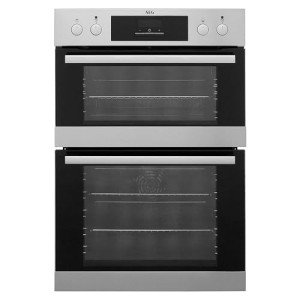The Best Built In Range Techniques To Make A Difference In Your Life
Comprehending the Built-In Range: A Deep Dive Into One of the Most Versatile Programming Features The built-in function range() is among the most frequently utilized functions in programming, particularly in Python. Its simpleness and versatility make it an important tool for developers, engineers, and information researchers alike. In this article, we will explore the essential elements of the built-in range function, its syntax, use cases, and some useful examples to assist you utilize its power in your coding ventures. What is the Built-In Range? In Python, the range() function produces a series of numbers. It is frequently utilized for version, particularly within loops, allowing developers to carry out a block of code a particular number of times without manually defining each model. Syntax of the Range Function The range() function can take one, two, or three arguments, and its fundamental syntax is as follows: range( start, stop, action). start: The beginning point of the sequence (inclusive). If left out, it defaults to 0. stop: The endpoint of the sequence (unique). This argument is required. step: The difference in between each number in the sequence. If left out, it defaults to 1. Examples of Using Range. Standard Usage: Using range() in an easy for loop to print numbers from 0 to 4:. for i in range( 5 ):. print( i). Output:. 0 1. 2. 3. 4. Defining a Start and Stop: You can define both a beginning point and an endpoint:. for i in range( 2, 6):. print( i). Output:. 2. 3. 4. 5. Using a Step Value: The step criterion enables you to manage the increments:. for i in range( 0, 10, 2):. built in electric ovens ( i). Output:. 0 2. 4. 6. 8. Counting Backwards: The action can likewise be unfavorable, enabling counting down:.  for i in range( 5, 0, -1):. print( i). Output:. 5. 4. 3. 2. 1. built in electric ovens . Iterating Over Lists: While utilizing range() prevails in for loops, it can also be beneficial for repeating over the indices of a list. fruits = [' apple', 'banana', 'cherry'] for i in range( len( fruits)):. print( f” i: fruits [i] “). Output:. 0: apple. 1: banana. 2: cherry. Developing Number Sequences: The function is handy for producing sequences of numbers, which you might require for algorithms or information adjustment. number_list = list( range( 10, 21)). print( number_list). Output:. [10, 11, 12, 13, 14, 15, 16, 17, 18, 19, 20] List Comprehensions: range() works wonderfully with list understandings for more condensed expressions. squares = [x ** 2 for x in range( 5)] print( squares). Output:. [0, 1, 4, 9, 16] Conclusion. The built-in range function is an essential function in Python that supplies a basic way to create series of numbers, which can be utilized for a range of programs jobs. Whether you are working on loops, generating lists, or carrying out algorithms, comprehending how to utilize range() is important for effective Python coding. As you continue to check out the language, you'll certainly discover new ways to leverage this powerful tool, making your programming jobs more efficient and structured.
for i in range( 5, 0, -1):. print( i). Output:. 5. 4. 3. 2. 1. built in electric ovens . Iterating Over Lists: While utilizing range() prevails in for loops, it can also be beneficial for repeating over the indices of a list. fruits = [' apple', 'banana', 'cherry'] for i in range( len( fruits)):. print( f” i: fruits [i] “). Output:. 0: apple. 1: banana. 2: cherry. Developing Number Sequences: The function is handy for producing sequences of numbers, which you might require for algorithms or information adjustment. number_list = list( range( 10, 21)). print( number_list). Output:. [10, 11, 12, 13, 14, 15, 16, 17, 18, 19, 20] List Comprehensions: range() works wonderfully with list understandings for more condensed expressions. squares = [x ** 2 for x in range( 5)] print( squares). Output:. [0, 1, 4, 9, 16] Conclusion. The built-in range function is an essential function in Python that supplies a basic way to create series of numbers, which can be utilized for a range of programs jobs. Whether you are working on loops, generating lists, or carrying out algorithms, comprehending how to utilize range() is important for effective Python coding. As you continue to check out the language, you'll certainly discover new ways to leverage this powerful tool, making your programming jobs more efficient and structured.